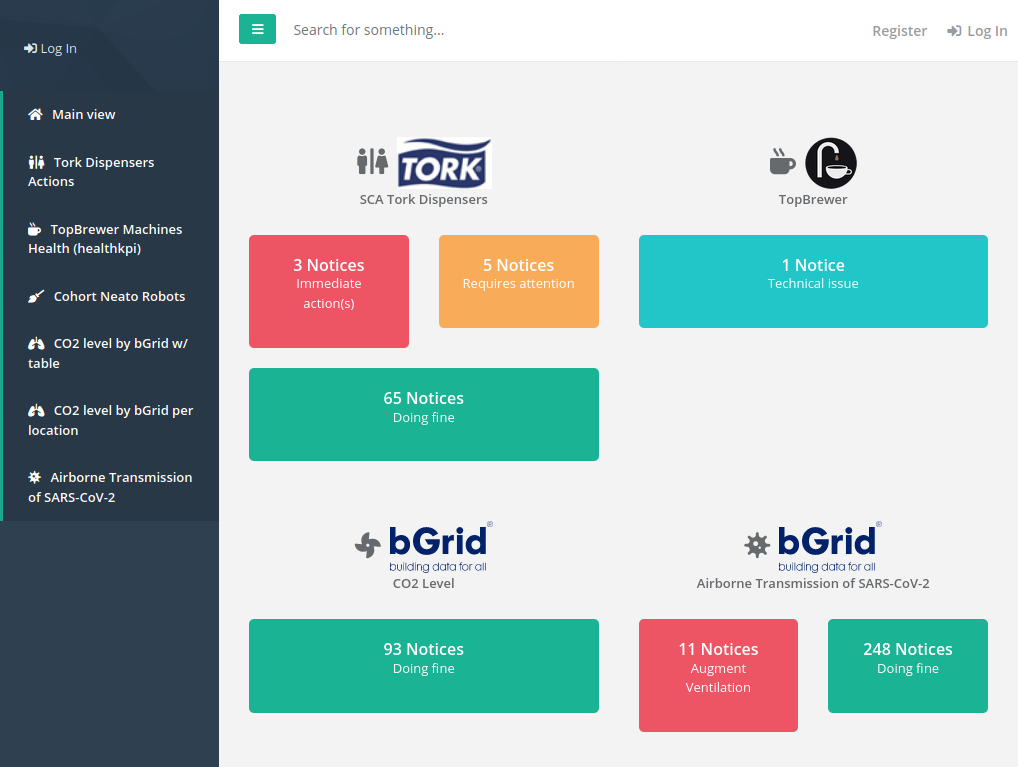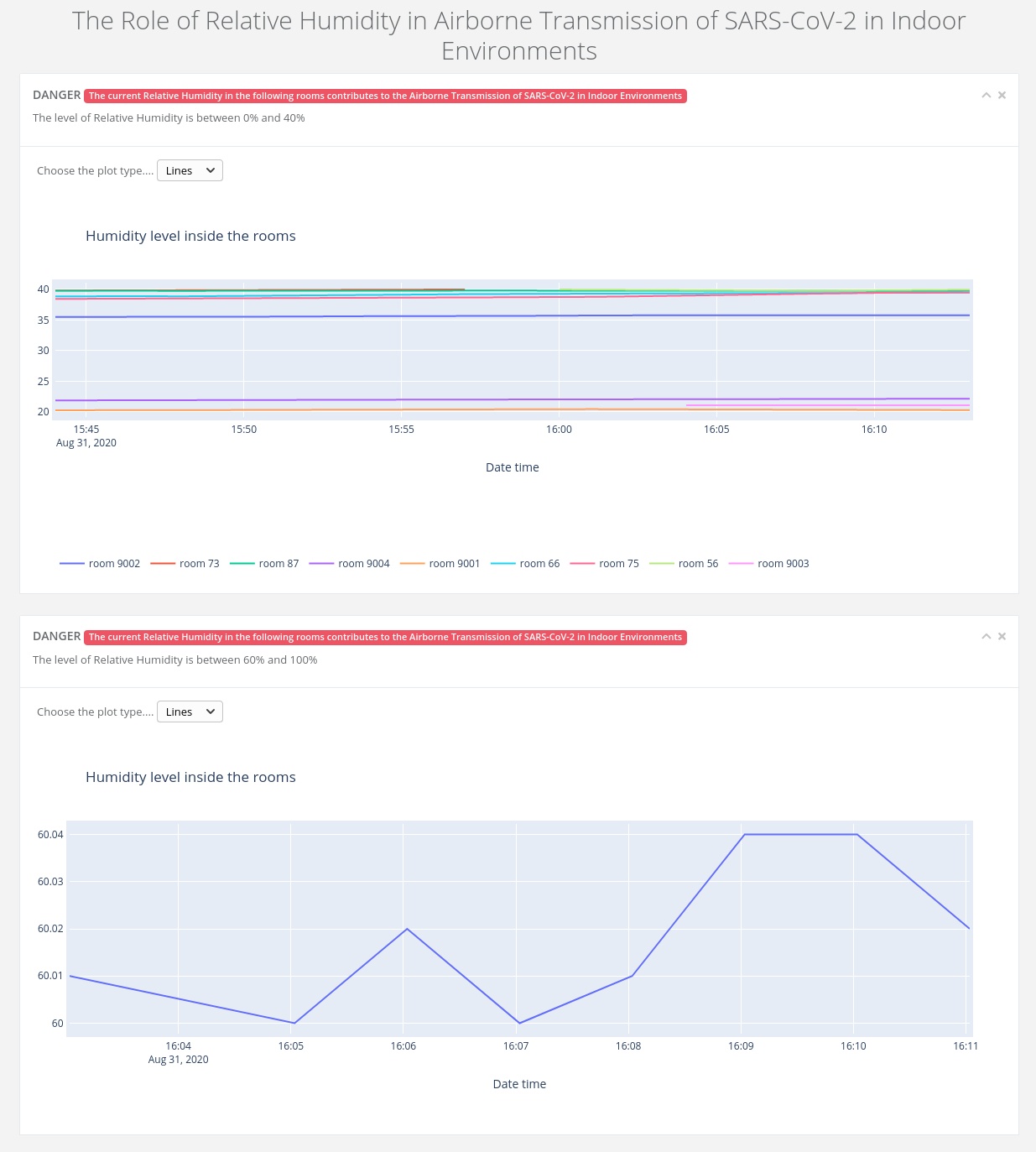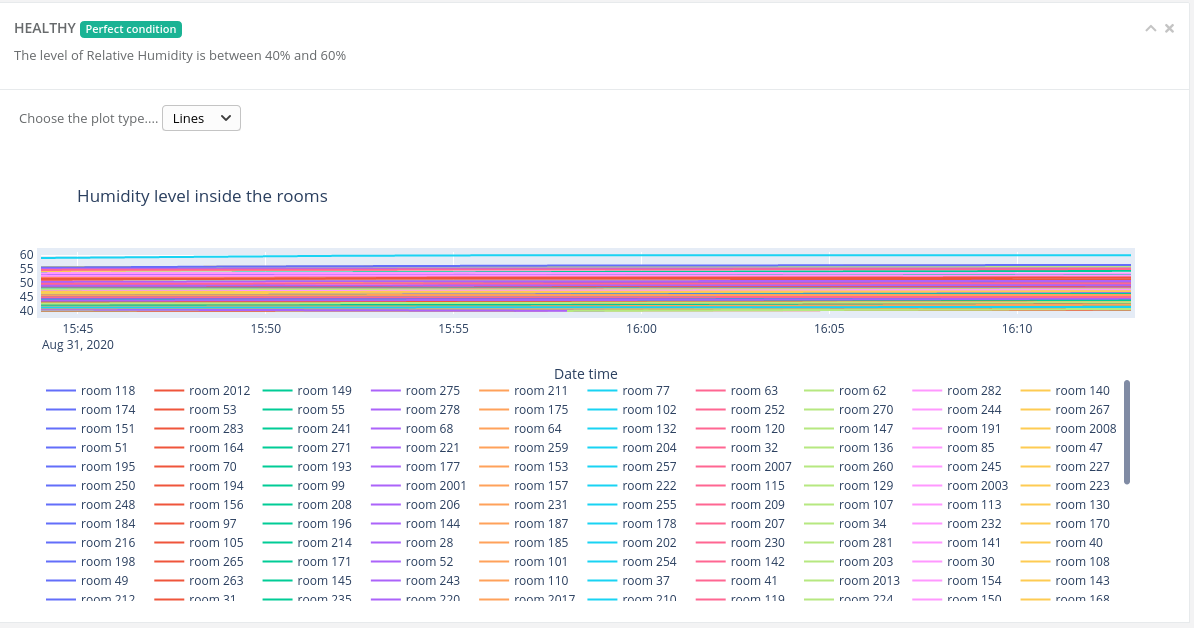The Role Of Relative Humidity In Airborne Transmission Of Sars-Cov-2 In Indoor Conditions¶
The fate of Microorganisms inside the Viral Droplets¶
A recent study [AWM20] explained that the viruses survived well at Relative Humidities below 33% and at 100%, whereas, at the intermediate Relative Humidities the viability was considerably reduced
Based on the Lin and Marr (2020) [LM20] findings, the viability of the virus is typically much lower at a Relative Humidity around 60% (~55%).
Relative Humidity is a factor responsible for airborne transmission of the SARS-CoV-2 virus.
In dry indoor areas, the chances of airborne transmission are higher than in humid areas.
Indoor air at 40 to 60% Relative Humidity is the optimum level for human health.
Important to set minimum Relative Humidity standard for indoor environments.
Survival or Inactivation of Virus on Surfaces (SARS-CoV-1)¶
A report [YZMZ20] based on humidity’s role on virus survival and inactivation on surfaces showed that high temperature at high relative humidity has a collegial impact on inactivation of SARS-CoV-1 viability (Chan et al., 2011). Whereas lower temperatures and low humidity support prolonged survival of virus on contaminated surfaces.
The Role of Dry Indoor Air in Airborne Transmission of Viruses¶
During cold winters, outdoor air is drawn indoors and then heated to a comfortable temperature level. This process will significantly lower the indoor RH, which creates an extremely dangerous situation for indoor residents, particularly during the COVID-19 pandemic.
When the indoor RH is less than 40 percent, humans become more vulnerable to viral respiratory infections making the SARS-CoV-2 virus more infectious in the inhaled air
During the inhalation of low RH air, the mucus in our nose and throat becomes dry and more viscous, which diminishes cilia’s capability to expel viral aerosols.
Comparison Of Indoor And Outdoor (Ambient) RH Relationship With Covid-19¶
Based on an indoor experiment from Chinese cities during Jan-March 2020, the airborne spread of SARS-CoV-2 was reduced by increasing RH from 23.33% to 82.67% (Yao et al., 2020)
Feng et al. (2020) [FMSY20] recently investigated the influence of RH using numerical modeling. In the study, they considered 40% RH as lower bound and 95% RH as upper bound.
They found that 40% RH activates the evaporation of water in the cough droplets, leading to droplet shrinkage and prolonged suspension in the air, whereas high RH at 95% will increase the droplet size due to hygroscopic growth with higher deposition fractions both on humans and on the ground.
Because, in more humid outdoor environments [i.e., In Malaysia, Singapore], the population is more likely to use drier indoor air and thus promote more COVID viability.
Facility Management Web Platform¶
FM Tech develops and maintains the FM Platform: https://fmplatform.azurewebsites.net
The web platform triggers alerts and informs the cleaner agent and facility managers of the required tasks to keep a high level of services towards their customers (Outcome-based contracts).
The web platform is connected to multiple devices: vacuum cleaners, BACnet-enabled devices (CO2-Air quality, Relative Humidity, Occupancy, Temperature, Light & Sound Intensity, Movement, Noise level), Coffee Machines, Dispensers, Lockers, Office documents, ERPs, Service Management software, Weather forecast, UV, etc.
The FM Platform runs on multiple devices: browser, tablet, or mobile device. The FM Platform runs in the public cloud, in the private cloud, or on-premise.
FM Platform: Dashboard alerting the manager when actions are required¶

Dangerous condition due to Airborne Transmission of SARS-CoV-2 in Indoor Environments¶

Healthy condition in an indoor environment¶
